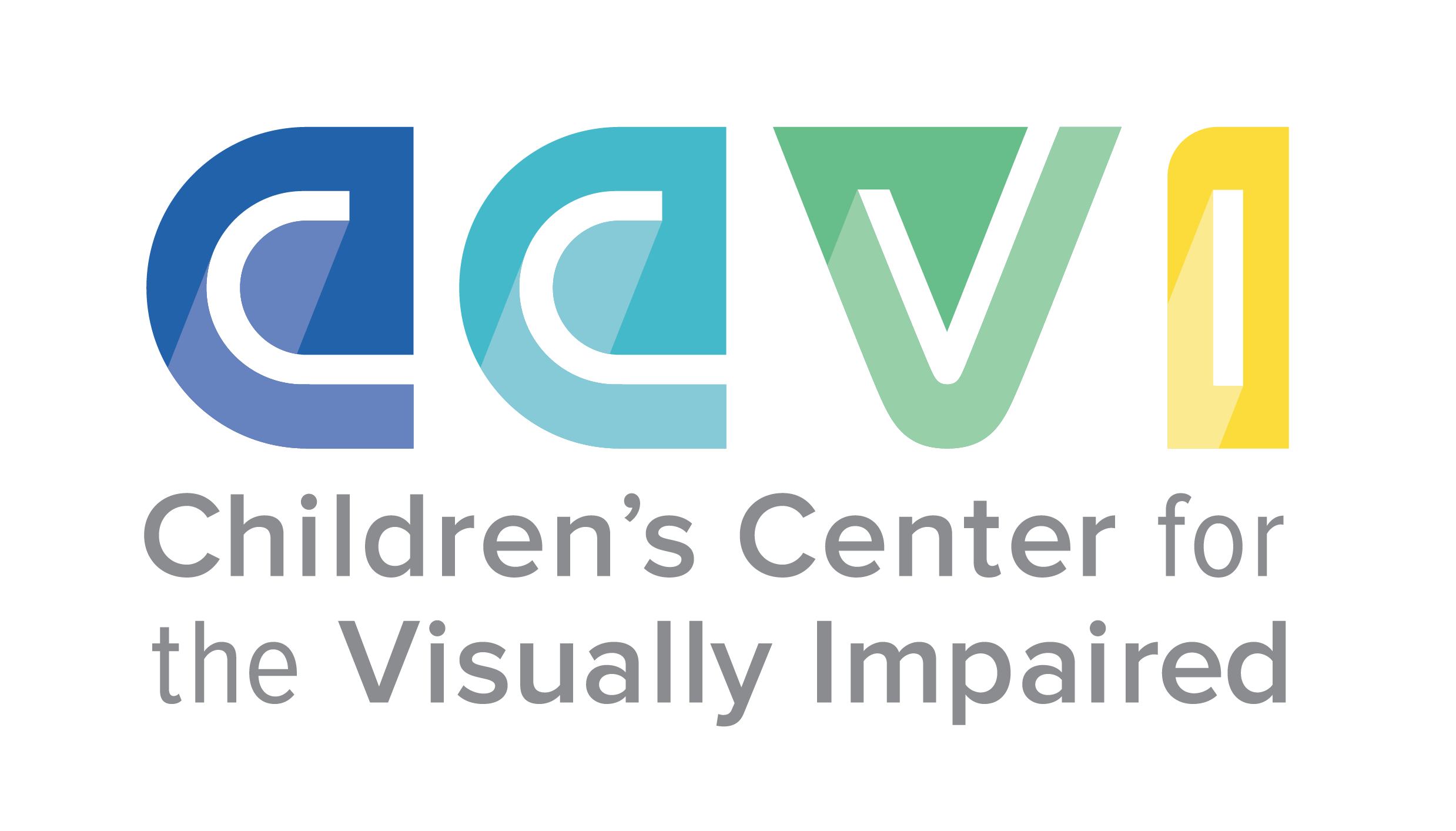Conquering the World: Developing Determination & Cultivating Independence
When Alex Olson, Director of Vision Services, thinks back to the first time she met Mike and Katy Tepper and their son, Cal, a few years ago, she knew CCVI was where they belonged right away.
When the Tepper's came to tour CCVI with their son, Alex recalls Cal’s curiosity as he was exploring everything during the tour. Later, Alex scooped up Cal to hold him, and the little boy embraced her with open arms. His parents stopped and gasped.
“You are the first person outside of family that he has let hold him...ever.”
Little did Mike and Katy know that CCVI would become a part of their family through his attendance at school at the Children’s Center Campus.
Cal is now 3 years old and has been enrolled at CCVI for the past couple of years and is still a very curious little boy with a determined personality. He has a love for a wide variety of music, and his little sister, and is always requesting to read “just 1 more” book. However, his greatest passion is caring for his 100lb German Shepherd, Hawk.
“If he doesn’t become a negotiator or lawyer for animal rights activist groups, I would consider his childhood wasted,” says Katy, laughing. “The negotiations are endless.”
But unlike other 3-year-olds, Cal was born with a rare disease called Senior Loken Syndrome, and is 1 of only 24 documented cases worldwide. This rare disease causes a kidney condition called nephronophthisis and an eye condition known as Leber congenital amaurosis, causing increased light sensitivity, involuntary movement of the eyes (nystagmus), and extreme farsightedness.
Although there is no corrective treatment for Senior Loken Syndrome, that hasn’t kept Cal from standing up for himself and others. Since attending CCVI, Cal has excelled in his early childhood development and braille skills.
Cal’s Teacher of the Visually Impaired Molly Taylor, commented on Cal’s development saying, “Cal is becoming more independent all the time with his self-help skills and his hands and fingers have gotten stronger to make braille dots using the braille writer! We love having Cal in Classroom 3!”
Depending on a child’s vision diagnosis and exceptionalities, braille is often the path to literacy for visually impaired children. Since braille requires a large amount of finger strength to accurately indent each dot on the stiff braille paper, it's very important for young children, like Cal, to work up their finger strength so they can continuously improve their braille literacy throughout their lives.
Cal’s explosion in his early childhood development with speech and language, orientation and mobility, and occupational therapy, are all great achievements. But, according to his mom, his biggest achievement is his determination and independence.


